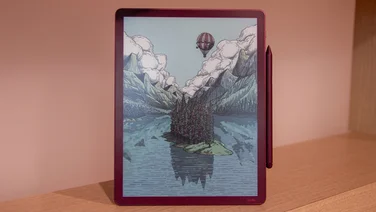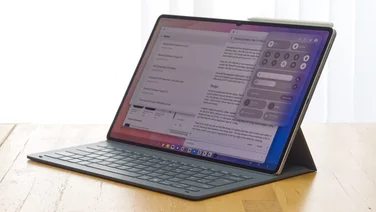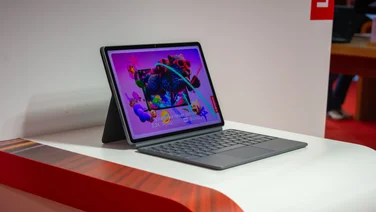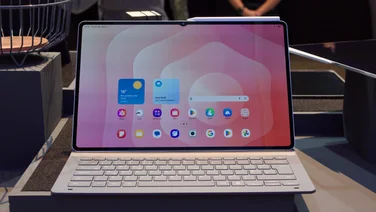To help us provide you with free impartial advice, we may earn a commission if you buy through links on our site. Learn more
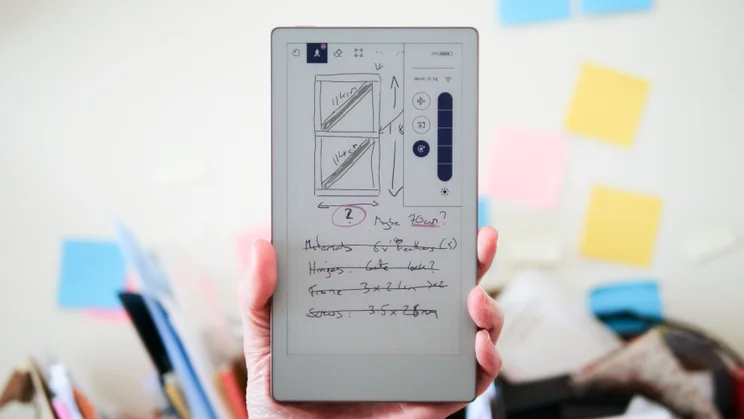
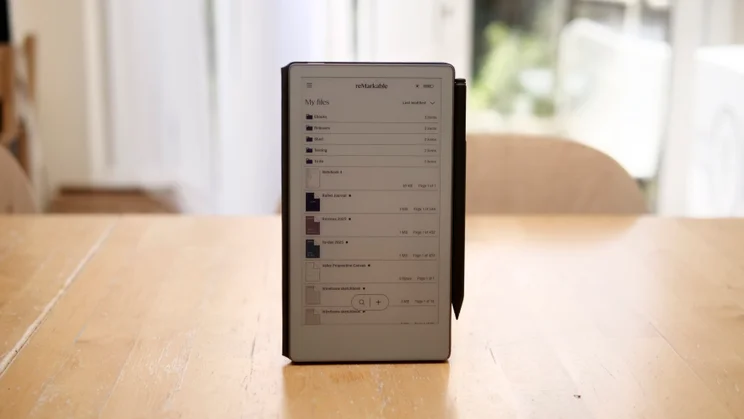
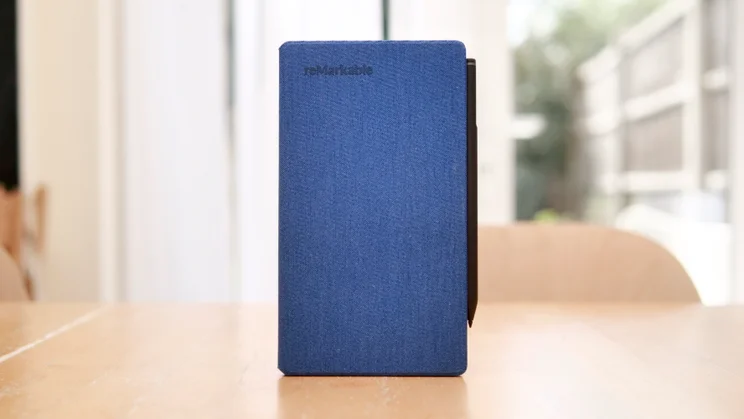
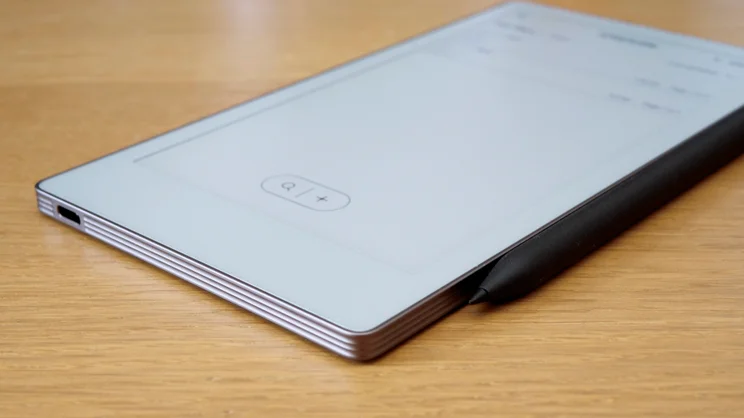
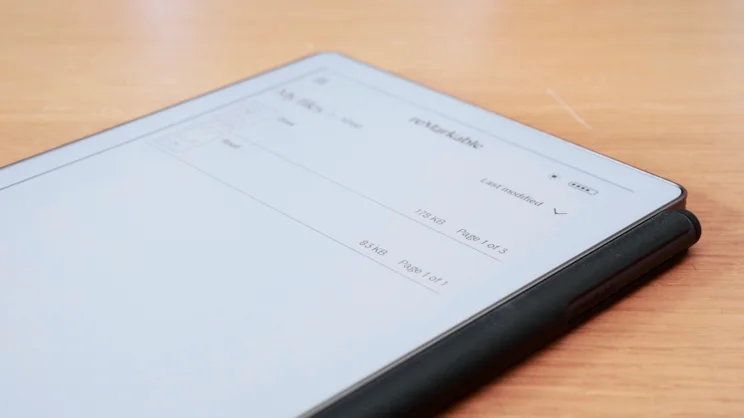
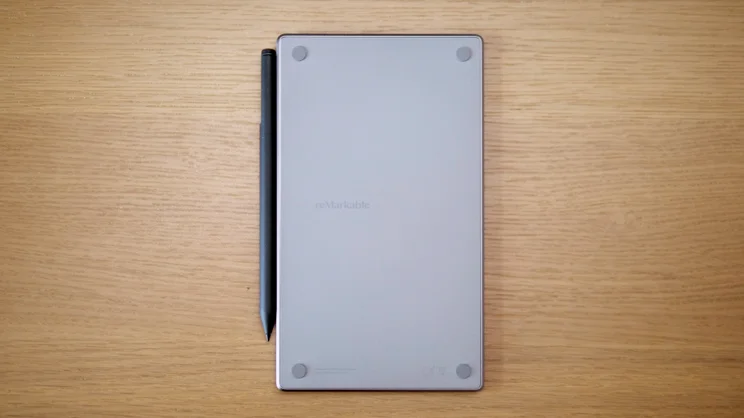
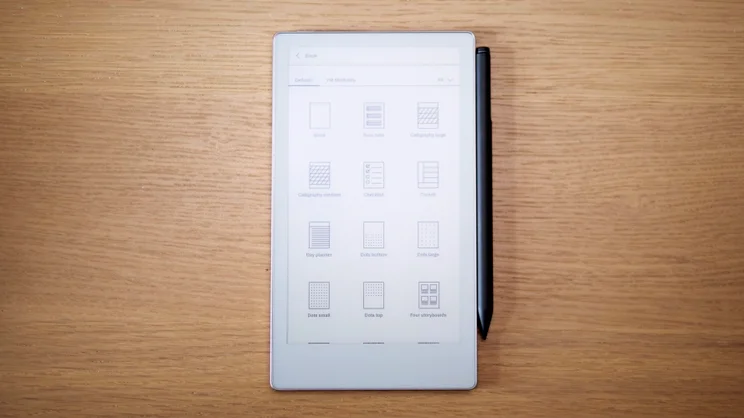
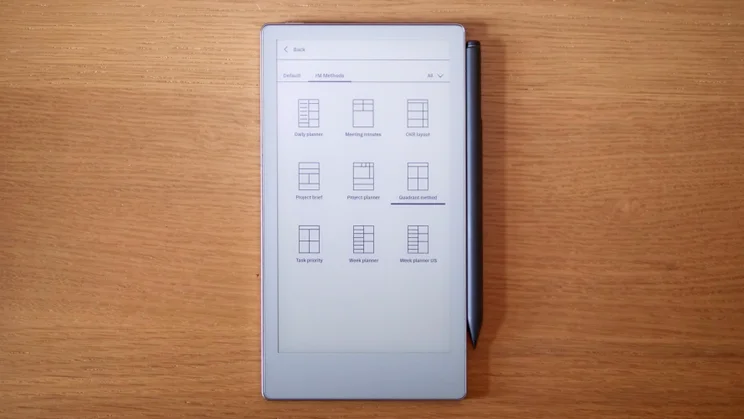
- Compact and beautifully made
- Feels like writing on paper
- Distraction-free note-taking feels
- Touchscreen sensitivity needs a tweak
- Expensive
- Connect synchronisation service is extra
Technology takes many forms, but seldom are they as simple, single-minded and pure in intent as the Remarkable Paper Pro Move. This is an e-ink writing tablet, a digital notepad that’s designed with one aim in mind: to make note-taking, sketching, annotation and to-do listing as simple and effective as possible.
It’s not the first note-taking tablet to do this, of course. Remarkable effectively created this category of devices with the launch of the original reMarkable in 2017, and since it became a bit of a sleeper hit, other companies have followed suit with their own devices, most significantly Amazon with its Kindle Scribe, but also companies like Boox and Kobo with its Elipsa 2e.
The Remarkable Paper Pro Move is the first digital notepad we’ve reviewed, however, that you can fit in your pocket, and it combines that convenient size with a colour E Ink display.
What do you get for the money?
The Remarkable Paper Pro Move is not cheap, though. It costs £399 and after that, if you want to make the most of its connectivity, synchronise all your notes across devices and so on, you really need to pay a monthly subscription of £2.99 per month, which isn’t too onerous, at least. If you don’t want to pay that, only the last 50 days worth of notes are stored in the cloud – though they do all stay on your device.
So what does your £399 get you exactly? Well, in the box is the tablet itself and the stylus – Remarkable calls it the Marker – but no case. If you want one of those, it’s another £40 if you buy one with the tablet or £59 if you buy it later.
You can also upgrade the standard Marker stylus to the Marker Plus, but I’m not sure of the value that upgrade represents. It’s another extra £40 and all it adds is the ability to flip it around and use the top to erase your digital scribbles. You can just as easily switch tools and use the nib to erase or tap with two fingers to undo.








The Move is a fantastically designed thing. It’s light at 230g and slim at a mere 6.5mm thick. It’s 108 x 196mm footprint is small enough to slip into a jacket pocket and it feels built to take the brunt of being carried around every day. I particularly like the way the frame of the device is grooved to look like a stack of paper, and kudos to the engineer who put such strong magnets on the edge for the stylus dock. Once attached for charging, it’s going nowhere without a good strong tug.
If you are thinking of investing, it makes sense to pair it with one of the cases, no matter how tough the tablet feels. These cases snap firmly to the rear via a series of magnets and, when closed, there’s a retaining flap that wraps around the Marker stylus as belt-and-braces protection against detachment and loss.








The display itself is a wonder. It measures 7.3in across the diagonal, has a resolution of 954 x 1,696 and comes with light, so you can work and read in dim conditions. And, just like the recent Kindle Colorsoft, it uses colour E Ink technology.
Unlike the display on the Kindle, however, the Move employs reMarkable’s Canvas Color display, which is based on an E Ink Gallery 3 panel. Where the Kindle’s Kaleido 3 tech uses a passive colour filter on top of an E Ink panel that’s filled with black and white pigments, Gallery 3 tech uses coloured pigments within the panel itself. The result is better contrast and a cleaner, whiter page to write and draw on, and sharper graphics, too.
What’s so special about it?
It’s important to point out at this point that the colours the Move is capable of producing are nothing like the colours an iPad or Tab S11 can pump out. They’re pale pastel shades instead of intense and saturated.
However, they do the job of sprucing up your notes and jottings and do help your highlights stand out. One of the things I used it for during my time testing it was to load in press release PDFs and pick out details for quick reference while I was working. Having different colours to hand helped fine-tune the readability of the text as I was highlighting it.








But the colour E Ink tech isn’t the best thing about the reMarkable Paper Pro Move. It’s the writing experience that sets this tablet apart from other similar products I’ve tried. It just feels much closer to the experience of actually writing on paper, and that’s the key to its appeal. This is thanks to a combination of factors: the texture applied to the glass, the slightly forgiving plastic tip on the Marker and the speed with which your “ink” appears on screen as you write.
It’s so good that I soon forgot that I was taking notes on a display at all and focused on what I was doing, without the distraction of constant social media, smart home and email notifications. In fact, the more I’ve used it, the more uses I’ve found for it. To start with, it was put to work managing my daily to-do lists at work and taking notes during meetings.








But I’ve also started using it for sketching ideas down – specifically for my new shed build. Being able to load in dotted or graph paper for this is a godsend and makes sketching out basic diagrams and measurements easy. I prefer it for this sort of stuff, rather than trying to write it all down in the Notes app on my iPhone 16 Plus, because the screen is larger and it’s just nicer using a pen and “paper”.
And there are loads of other paper templates you can choose in addition to the standard lined, graph and dotted paper. You can also choose from weekly planners, guitar tab sheets and blank music staff paper for composers, to perspective grids for drafting and sketching.








There’s even the capability to import extra community-generated templates via the new rMethods feature, with a huge variety of templates to play with. You can choose from wireframes for app developers to bullet journals, annual planners and all sorts of business-focused templates to help you organise your notes.
Finally, it’s also worth mentioning the synchronisation side of things here, too, because that has been (and continues to be) a Remarkable strength. Install the companion app – available across MacOS, Windows, iOS and Android – and you’ll be able to view all your notes on whichever device you happen to be working on at the time, and even drag files back into the app for synchronisation back to the Move tablet.
What’s not so great about it?
I mentioned earlier that the Remarkable Paper Pro Move can be used as an e-reader, as well as an annotator and note-taking device, but I tried using it as my main reading device and it frustrated me, mainly because I found the page turn gestures just weren’t sensitive enough.
To be honest, I could level that accusation at any number of the Move’s other gestures. It often took two or three tries just to get a gesture to register on the device, which I found frustrating. I did manage to get the hang of it after a day or so, but even with practice, it wasn’t perfect.








That’s a shame, because the suite of gestures available on the Move seems to be nicely thought out. I particularly like the two-finger tap to undo and the triple-finger tap to redo, but there are others that are useful (or would be), too, such as the two-fingered swipe from the top of the screen to access recent notebooks, and the single-finger swipe from the top corner that brings up the quick settings panel. It’s the sort of thing that could be fixed with a firmware upgrade, though, so it’s not an insurmountable issue.
I’d also like to have had the option to buy a keyboard case as you can with Remarkable’s larger tablets. I can understand why Remarkable decided not to offer this, but keyboards this small can work (remember the Psion Series 5?) and are especially useful in compact spaces like airline seats.
Finally, I was disappointed that I wasn’t able to test one of the Move’s newest and most exciting features: Handwriting Search. This uses handwriting recognition tech to let you search through your notes across the device without having to convert them to text first – a feature I think all digital notepads should have, but none that I know of do. It’s difficult to come down too hard on Remarkable here, as the feature is being rolled out shortly, but I’d love to have given it a try for this review.
Remarkable Paper Pro Move: Should you buy one?
I’d love to wholeheartedly recommend that everyone go out and buy a Remarkable Paper Pro Move, but I can’t and that vexes me. It’s a wonderfully designed thing that performs the job of providing a simple, distraction-free way of taking notes, sketching diagrams and annotating documents brilliantly. Writing with the Marker on the Move’s textured glass screen really is very close to the experience of writing with pen on paper and the software synchronisation piece works fantastically as well.
But, for me, it’s the price that gets in the way. Realistically, you’re going to be spending £439 if you buy it with a case, and that rises to £479 if you opt for the Marker Plus with the “eraser” on top. That’s £9 more than the 10.2in Kindle Scribe at £430 and you have to pay £2.99 per month once your 100 day trial of the Connect synchronisation service expires. It’s also £20 more expensive than the Remarkable Paper 2, which does the job just as well and has a larger screen, although it doesn’t have colour.
Still, the Remarkable Paper Pro Move does achieve what it sets out to, and with a panache that very few other products manage. It’s single-minded in its purpose and the writing experience is superior to other writing tablets I’ve tried. If you’re willing to pay the premium, it’s the very best compact digital notepad you can buy.












